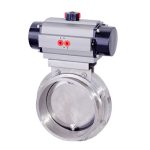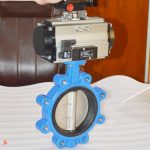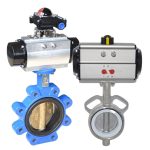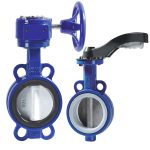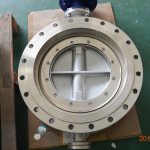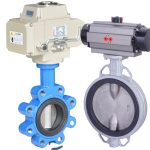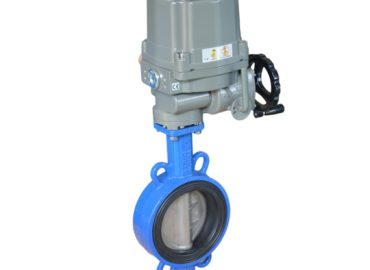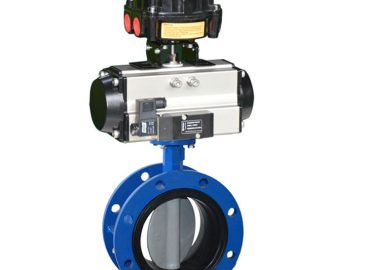Butterfly valves play a crucial role in controlling the flow of fluids in various industrial applications, ensuring efficient and safe operations. One of the key components of butterfly valves is the EPDM (ethylene propylene diene monomer) seal, which is responsible for providing an effective and reliable sealing mechanism. However, despite their widespread use, EPDM seals can present certain challenges that may impact their performance and durability. In this blog post, we will delve into the most common challenges encountered when using butterfly valve EPDM seals in industrial applications and provide insights on how to overcome these obstacles to ensure optimal performance.
Introduction
Butterfly valves are essential components in a wide range of industrial applications, as they regulate and control the flow of fluids through pipelines with precision and reliability. EPDM (ethylene propylene diene monomer) seals are commonly used in these valves due to their excellent resistance to weathering, ozone, and aging, as well as their ability to maintain flexibility at low temperatures. However, despite their many advantages, there are several challenges that can arise when utilizing butterfly valve EPDM seals in industrial settings. These challenges include temperature resistance limitations, chemical compatibility issues, wear and tear concerns, difficulties with installation and maintenance, and potential environmental impacts. For instance, EPDM seals may not perform optimally under extreme temperature conditions, especially in high-temperature applications where they could lose their elasticity and become more susceptible to leaks. Additionally, certain chemicals may react negatively with EPDM seals, leading to premature degradation and failure. Wear and tear is another concern, as factors such as abrasion, pressure, and installation errors can contribute to the shortened lifespan of the seals. Proper installation and maintenance are crucial in ensuring the optimal performance of EPDM seals, but human error or lack of expertise can lead to issues that compromise the integrity of the seal. Lastly, the use of EPDM seals in industrial applications may raise environmental concerns, particularly in terms of proper disposal and recycling practices. In order to address these challenges and ensure the longevity and effectiveness of butterfly valve EPDM seals, it is vital for industry professionals to stay informed about the latest advancements in sealing technology and employ best practices in their operations.
Brief explanation of butterfly valves and their importance in industrial applications
Butterfly valves are a type of flow control device used extensively in various industrial applications to regulate the flow of liquids, gases, and semi-solid materials through pipelines. They consist of a circular disc mounted on a rotating shaft, which can be turned to open or close the valve, allowing for precise control over the flow rate. The importance of butterfly valves in industrial settings cannot be overstated, as they play a crucial role in ensuring the efficient and safe operation of processes such as water treatment, chemical processing, power generation, and food and beverage production. Their compact design, ease of operation, and relatively low cost make them a preferred choice for many industries. Moreover, butterfly valves offer excellent throttling capabilities, allowing for accurate flow control even under high-pressure conditions. By providing reliable, durable, and efficient flow control solutions, butterfly valves contribute significantly to the overall performance and productivity of industrial systems.
Introduction to EPDM seals and their role in butterfly valves
EPDM (ethylene propylene diene monomer) seals are a type of synthetic rubber material that is widely used in butterfly valves due to their excellent sealing properties and versatile characteristics. These seals play a vital role in ensuring the reliability and leak-free performance of butterfly valves, as they create a tight barrier between the valve components, preventing the escape of fluids or gases. EPDM seals are known for their outstanding resistance to weathering, ozone, and aging, which makes them suitable for long-term use in various environmental conditions. Additionally, they have a broad temperature range, maintaining their flexibility and elasticity even at low temperatures, ensuring consistent sealing performance across diverse applications. Their compatibility with a wide array of chemicals and resistance to water and steam also make EPDM seals an ideal choice for use in industries such as water treatment, chemical processing, and food and beverage production. In summary, EPDM seals are a critical component of butterfly valves, providing the necessary sealing mechanism to ensure the efficient and safe operation of flow control systems in industrial applications.
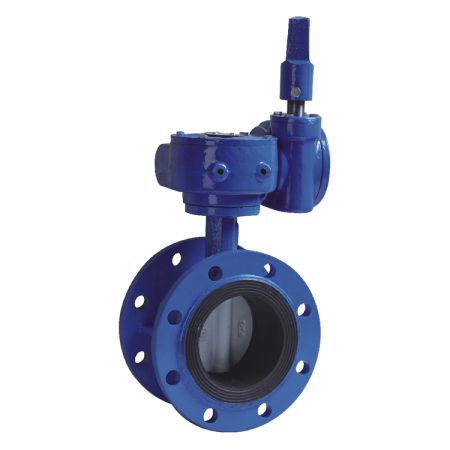
Purpose of the blog post: Discuss the challenges faced when using EPDM seals in industrial applications
The purpose of this blog post is to shed light on the challenges that may arise when using EPDM seals in industrial applications, particularly in butterfly valves. While EPDM seals offer numerous advantages, such as excellent resistance to weathering and compatibility with a wide range of chemicals, they are not without their limitations. By discussing these challenges in detail, we aim to provide industry professionals with valuable insights that can help them make informed decisions in selecting the appropriate sealing materials for their specific applications. Furthermore, by addressing the common concerns associated with EPDM seals – including temperature resistance, chemical compatibility, wear and tear, installation and maintenance, and environmental impact – we hope to equip our readers with practical solutions and best practices to overcome these obstacles and ensure the optimal performance and longevity of their butterfly valve EPDM seals. This knowledge will ultimately contribute to improved efficiency, safety, and sustainability in various industrial processes.
Temperature Resistance
Temperature resistance is a critical factor to consider when selecting sealing materials for butterfly valves in industrial applications, as the performance and durability of the seals can be significantly impacted by the operating temperature conditions. EPDM seals, while offering a broad temperature range and maintaining flexibility at low temperatures, may exhibit limitations when exposed to extreme temperatures, particularly in high-temperature environments. Under such conditions, EPDM seals can lose their elasticity and become more prone to deformation, leading to compromised sealing performance and potential leaks. Furthermore, prolonged exposure to high temperatures can accelerate the aging process of the EPDM material, resulting in a reduced service life. Conversely, at extremely low temperatures, EPDM seals may become less flexible, which could also negatively impact their sealing capabilities. To address these temperature-related challenges, it is essential to select the appropriate grade of EPDM material designed to withstand the specific temperature range of the intended application. Additionally, proper installation and regular maintenance of the seals can help minimize the effects of temperature fluctuations on their performance. By understanding the limitations of EPDM seals with regards to temperature resistance and implementing suitable measures to mitigate these issues, industry professionals can ensure the reliability and longevity of their butterfly valve sealing systems.
Explanation of temperature resistance limitations of EPDM seals
EPDM seals, though widely used in epdm seat butterfly valve due to their versatile properties, do exhibit certain temperature resistance limitations that can impact their performance and durability. These synthetic rubber seals are known for their ability to maintain flexibility and elasticity over a broad temperature range; however, they may struggle in extreme temperature conditions. In high-temperature environments, EPDM seals can lose their elasticity, leading to deformation and compromised sealing performance, which may result in leaks or failure. Prolonged exposure to elevated temperatures can also exacerbate the aging process of the material, shortening its service life. On the other hand, at extremely low temperatures, EPDM seals may become less flexible and less effective at providing a tight seal. To address these limitations, it is crucial to select the appropriate grade of EPDM material designed for the specific temperature range of the application and to ensure proper installation and maintenance procedures are followed. By considering the temperature resistance limitations of EPDM seals and implementing suitable measures to counteract these challenges, industry professionals can optimize the performance and longevity of their butterfly valve sealing systems.
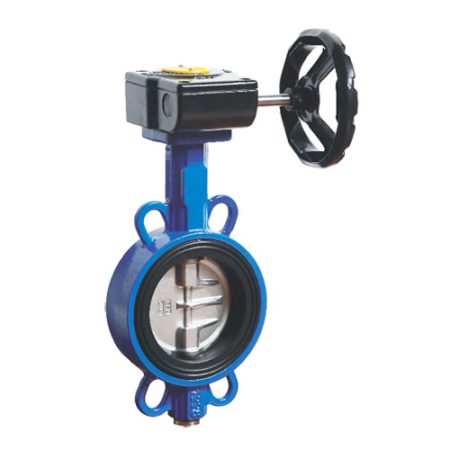
Impact of high and low temperatures on the performance of the seals
The performance of seals, such as EPDM seals used in butterfly valve seat epdm , can be significantly affected by exposure to both high and low temperatures. In high-temperature environments, the elasticity of EPDM seals may be compromised, causing them to lose their shape and form, which in turn can result in inadequate sealing performance and potential leaks. This loss of elasticity can also lead to accelerated material degradation and a shorter service life for the seals. Conversely, at extremely low temperatures, EPDM seals may become less flexible and more rigid, which can impair their ability to conform to the valve components and create a tight seal. This reduced flexibility can negatively impact the overall sealing performance, potentially allowing fluids or gases to escape and compromising the efficiency and safety of the industrial process. To mitigate the effects of extreme temperature fluctuations on the performance of EPDM seals, it is essential to select the appropriate grade of material designed for the specific temperature range of the application, as well as to ensure proper installation and maintenance practices are followed. By addressing the impact of high and low temperatures on seal performance, industry professionals can enhance the reliability and longevity of their butterfly valve sealing systems.
Solutions to overcome temperature-related challenges
To overcome temperature-related challenges associated with EPDM seals in butterfly valves, several solutions can be employed. First and foremost, selecting the appropriate grade of EPDM valve material specifically designed for the intended temperature range of the application is crucial. This ensures that the seals maintain their flexibility, elasticity, and sealing performance under both high and low temperature conditions. Additionally, proper installation practices should be followed to ensure a secure and tight seal, minimizing the risk of deformation due to temperature fluctuations. Regular maintenance, including periodic inspection of the seals for signs of wear, tear, or aging, can help identify potential issues early on and allow for timely replacement or repair. In certain cases, it may also be necessary to consider alternative sealing materials that are better suited to handle extreme temperatures, such as silicone or fluorocarbon elastomers. By implementing these solutions and best practices, industry professionals can effectively address temperature-related challenges, ensuring the optimal performance, reliability, and longevity of their butterfly valve sealing systems in various industrial applications.
Chemical Compatibility
Chemical compatibility is a vital consideration when selecting sealing materials for butterfly valves in industrial applications, as the seals must be capable of withstanding exposure to various chemicals and media without experiencing degradation or loss of sealing performance. EPDM seals are known for their excellent chemical compatibility with a wide range of substances, including water, steam, and many organic and inorganic acids. However, they do exhibit limitations when it comes to resistance against certain chemicals, such as hydrocarbons, oils, and strong solvents. Incompatible chemical exposure can cause swelling, softening, or hardening of the EPDM material, which may lead to compromised sealing performance, leaks, and ultimately, premature seal failure. To address chemical compatibility concerns, it is critical to carefully assess the specific chemicals and media that the seals will encounter in the intended application and choose the appropriate grade of EPDM material accordingly. In some cases, alternative sealing materials, such as fluorocarbon elastomers (FKM) or perfluoro elastomers (FFKM), may be more suitable for applications involving harsh chemicals or aggressive environments. Additionally, proper installation practices and regular maintenance, including inspection for signs of chemical degradation, can help ensure the longevity and reliability of the seals. By understanding and addressing the chemical compatibility limitations of EPDM seals, industry professionals can optimize the performance and durability of their butterfly valve sealing systems across a diverse range of industrial processes.
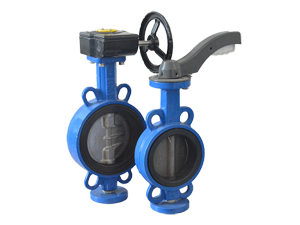
Explanation of chemical compatibility issues with EPDM seals
EPDM seals, while offering numerous benefits for use in butterfly valves, do present certain chemical compatibility issues that can impact their performance and longevity. Although they ex hibit excellent resistance to a wide variety of chemicals, such as water, steam, and many acids, they face limitations when exposed to specific substances like hydrocarbons, oils, and strong solvents. When EPDM seals come into contact with these incompatible chemicals, they may experience swelling, softening, or hardening, which can compromise their sealing performance and lead to leaks or premature failure. It is essential to understand these chemical compatibility concerns and carefully evaluate the chemicals and media that the seals will encounter in the intended application. By selecting the appropriate grade of EPDM material or considering alternative sealing materials better suited for harsh chemicals or aggressive environments, industry professionals can address these compatibility issues and ensure the optimal performance and durability of their butterfly valve sealing systems. Proper installation practices and regular maintenance, including inspection for signs of chemical degradation, further contribute to the longevity and reliability of the seals in various industrial processes.
Examples of chemicals that may cause problems with EPDM seals
EPDM seals, while demonstrating resistance to many chemicals, can encounter issues when exposed to certain substances that may compromise their performance and durability. Examples of chemicals known to cause problems with EPDM seals include hydrocarbons such as gasoline, diesel, and kerosene, which can lead to swelling and softening of the material. Additionally, oils, greases, and lubricants, particularly those derived from petroleum, can also adversely affect EPDM seals by causing them to degrade or lose their sealing capabilities. Strong solvents, such as acetone, toluene, and xylene, may cause hardening or embrittlement of the EPDM material, resulting in compromised sealing performance and potential leaks. Furthermore, some halogenated compounds, like chlorinated or brominated substances, can also negatively impact EPDM seals. It is crucial for industry professionals to be aware of these problematic chemicals and select the appropriate seal material or grade of EPDM specifically designed to withstand exposure to the chemicals present in their intended application. By considering these factors and taking necessary precautions, the reliability and longevity of butterfly valve sealing systems can be ensured across various industrial processes.
Recommendations for selecting appropriate seal materials based on the specific application
When selecting appropriate seal materials for butterfly valves in industrial applications, it is crucial to consider several factors to ensure optimal performance, reliability, and longevity. First, assess the specific chemicals and media that the seals will encounter in the intended application and choose a material with suitable chemical compatibility. EPDM seals, for example, offer excellent resistance to numerous chemicals but may face limitations when exposed to substances such as hydrocarbons, oils, or strong solvents. In such cases, alternative materials like fluorocarbon elastomers (FKM) or perfluoroelastomers (FFKM) may be more suitable. Second, consider the temperature range of the application, as different sealing materials have varying temperature resistance capabilities. Ensure that the chosen material can maintain its flexibility, elasticity, and sealing performance under both high and low temperature conditions. Third, take into account the pressure requirements of the system, as the seal material must be able to withstand the pressures it will be subjected to without deforming or failing. Finally, evaluate factors such as wear resistance, ease of installation, and cost-effectiveness when selecting the ideal seal material. By carefully considering these factors and selecting the appropriate sealing material based on the specific application requirements, industry professionals can optimize the performance and durability of their butterfly valve sealing systems across a diverse range of industrial processes.
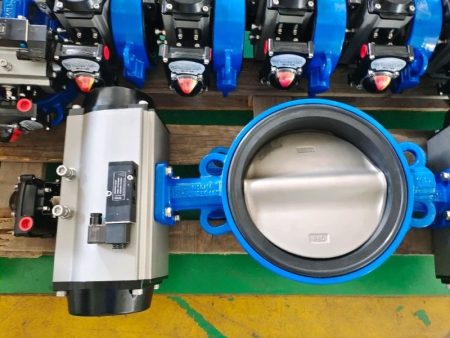
Wear and Tear
Wear and tear is an inevitable aspect of any mechanical system, including butterfly valve sealing systems, as the seals are subjected to continuous use, friction, pressure fluctuations, and exposure to various chemicals and temperature conditions. Over time, these factors can contribute to the gradual degradation of the seal material, leading to reduced elasticity, flexibility, and sealing performance. Wear and tear can manifest in several ways, such as surface wear, abrasion, erosion, or material fatigue, which may result in compromised sealing capabilities, leaks, or even seal failure. Additionally, aging and environmental factors, such as oxidation, hydrolysis, or ultraviolet (UV) radiation, can further exacerbate the wearing process and accelerate the deterioration of the sealing material. To address wear and tear concerns, it is essential to implement proper installation practices, regular maintenance, and periodic inspection of the seals for signs of wear, tear, or aging. By identifying potential issues early on, timely replacement or repair can be carried out, ensuring the reliability and longevity of the butterfly valve sealing system. Moreover, selecting the appropriate seal material based on the specific application requirements, including chemical compatibility, temperature range, and pressure resistance, can help minimize the impact of wear and tear on the seal’s performance and durability. By understanding and addressing wear and tear challenges, industry professionals can maintain optimal sealing performance and extend the service life of their butterfly valve sealing systems across a diverse range of industrial processes.
Description of wear and tear issues associated with EPDM seals
EPDM seals, commonly used in butterfly valve sealing systems, are susceptible to wear and tear issues over time due to continuous use, friction, pressure changes, and exposure to various chemicals and temperatures. These issues can manifest as surface wear, abrasion, erosion, or material fatigue, leading to a reduction in the seal’s elasticity, flexibility, and overall sealing performance. Furthermore, aging and environmental factors, such as oxidation, hydrolysis, and ultraviolet (UV) radiation, can contribute to the accelerated degradation of EPDM material. As a result, the compromised sealing capabilities may lead to leaks or even seal failure in the butterfly valve system. To mitigate wear and tear concerns associated with EPDM seals, it is crucial to implement proper installation practices, regular maintenance, and periodic inspection for signs of wear, tear, or aging. Early identification of potential issues allows for timely replacement or repair, ensuring the reliability and longevity of the butterfly valve sealing system. Additionally, selecting the appropriate grade of EPDM material based on the specific application requirements, including chemical compatibility, temperature range, and pressure resistance, can help minimize wear and tear’s impact on the seal’s performance and durability. By understanding and addressing wear and tear challenges, industry professionals can maintain optimal sealing performance and prolong the service life of their EPDM butterfly valve seals across various industrial processes.
Factors contributing to premature wear, such as abrasion, pressure, and installation errors
Several factors can contribute to the premature wear of butterfly valve seals, leading to reduced performance, leaks, or even failure. Abrasion, for instance, occurs when the seal material rubs against other surfaces or particles in the system, causing gradual erosion and degradation of the sealing surface. Pressure fluctuations within the system can also cause stress on the seal material, resulting in deformation, fatigue, or accelerated wear. Additionally, installation errors, such as improper alignment, overtightening, or incorrect sizing, can place undue stress on the seals, causing them to wear out prematurely or perform suboptimally. To minimize the impact of these factors on seal longevity, it is essential to follow proper installation practices, ensure appropriate sizing and alignment, and avoid overtightening. Regular maintenance and inspection of the sealing system for signs of wear, tear, or aging can also help identify potential issues early on, allowing for timely replacement or repair. Furthermore, selecting the appropriate seal material based on the specific application requirements, including chemical compatibility, temperature range, and pressure resistance, can help mitigate the effects of premature wear and prolong the service life of the butterfly valve sealing system. By understanding and addressing these factors, industry professionals can maintain optimal sealing performance and extend the durability of their butterfly valve seals across various industrial processes.
Tips for minimizing wear and tear and extending the life of EPDM seals
To minimize wear and tear and extend the life of EPDM seals in butterfly valve sealing systems, several best practices can be employed. First, ensure proper installation by following manufacturer guidelines, selecting the appropriate seal size, and avoiding overtightening or misalignment. Correct installation plays a crucial role in preventing undue stress on the seals and reducing the likelihood of premature wear. Second, conduct regular maintenance and inspections to identify signs of wear, tear, or aging. By detecting potential issues early on, timely replacement or repair can be carried out, ensuring the reliability and longevity of the sealing system. Third, choose the right grade of EPDM material based on the specific application requirements, including chemical compatibility, temperature range, and pressure resistance. Selecting a suitable material can help mitigate the effects of wear and tear and prolong the seal’s performance and durability. Fourth, consider implementing protective measures, such as lubrication or surface treatments, to reduce friction and abrasion between the seal and other system components. Finally, maintain a clean working environment and monitor the media flowing through the system to prevent the introduction of abrasive particles or contaminants that could accelerate wear and tear. By following these tips and addressing potential challenges proactively, industry professionals can optimize the performance and service life of their EPDM butterfly valve seals across various industrial processes.
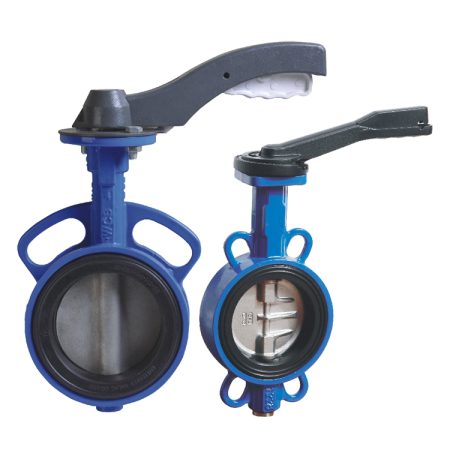
Installation and Maintenance
Installation and maintenance are critical aspects of ensuring optimal performance, reliability, and longevity for butterfly valve sealing systems. Proper installation involves adhering to manufacturer guidelines, selecting the appropriate seal size, ensuring correct alignment, and avoiding overtightening, which can place undue stress on the seals and lead to premature wear or failure. Additionally, the selection of the right seal material based on specific application requirements, such as chemical compatibility, temperature range, and pressure resistance, plays a significant role in maximizing the sealing system’s durability and effectiveness. Once installed, regular maintenance and inspections become essential to monitor the condition of the seals and identify signs of wear, tear, or aging. These maintenance routines may include visual inspections, leak detection tests, and periodic assessments of seal performance under various operating conditions.
Furthermore, maintenance practices should also involve cleaning and lubrication of the sealing components, as well as monitoring the media flowing through the system to prevent the introduction of abrasive particles or contaminants that could accelerate wear and tear. In cases where signs of wear or damage are detected, timely replacement or repair should be carried out to ensure the continued reliability and functionality of the sealing system. It is also crucial to maintain accurate records of maintenance activities, component replacements, and system performance data, which can provide valuable insights for future improvements and help predict potential issues before they become critical.
By prioritizing proper installation and implementing a comprehensive maintenance program, industry professionals can optimize the performance and service life of their butterfly valve sealing systems across various industrial processes. These practices not only contribute to the overall efficiency and safety of the operation but also minimize downtime and reduce long-term operational costs.
Importance of proper installation and maintenance for optimal performance of EPDM seals
The importance of proper installation and maintenance for optimal performance of EPDM seals in butterfly valve sealing systems cannot be overstated. Ensuring correct installation, which involves adhering to manufacturer guidelines, selecting the appropriate seal size, aligning the components accurately, and avoiding overtightening, is crucial to prevent undue stress on the seals and reduce the likelihood of premature wear or failure. Once installed, a comprehensive maintenance program should be implemented to monitor the condition of the EPDM seals, identify signs of wear, tear, or aging, and carry out timely replacement or repair as needed. Regular maintenance activities, such as visual inspections, leak detection tests, cleaning, and lubrication, help maintain the sealing system’s reliability and functionality. By prioritizing proper installation and maintenance, industry professionals can optimize the performance and service life of their EPDM butterfly valve seals across various industrial processes, ensuring overall efficiency, safety, and cost-effectiveness in their operations.
Common installation errors and their consequences
Common installation errors in pneumatic butterfly valve sealing systems can have significant consequences on the performance, reliability, and longevity of the seals. Some of these errors include improper alignment, incorrect sizing, and overtightening. Misaligned components can result in uneven pressure distribution and increased friction, leading to accelerated wear and tear or seal failure. Incorrect sizing of the seal, either too large or too small, can cause leaks, inadequate sealing, or excessive stress on the material, ultimately compromising the system’s functionality. Overtightening during installation can also place undue stress on the seals, causing deformation, reduced elasticity, or even damage to the sealing surface. These installation errors can lead to a range of negative consequences, such as compromised sealing performance, leaks, increased maintenance requirements, and shortened seal life. To avoid these issues, it is crucial to adhere to manufacturer guidelines, ensure proper alignment, select the appropriate seal size, and avoid overtightening during installation. By addressing these common errors, industry professionals can optimize the performance and durability of their butterfly valve sealing systems and maintain efficient, safe, and cost-effective operations.
Best practices for installing and maintaining EPDM seals in butterfly valves
Adhering to best practices for installing and maintaining EPDM seals in electric butterfly valve sealing systems is essential to ensure optimal performance, reliability, and longevity. During installation, follow manufacturer guidelines closely, select the appropriate seal size based on system requirements, and ensure proper alignment of all components to prevent uneven pressure distribution and excessive friction. Avoid overtightening, as it may cause deformation, reduced elasticity, or damage to the sealing surface. Once installed, implement a comprehensive maintenance program that includes regular visual inspections to identify signs of wear, tear, or aging, as well as leak detection tests to ensure the system’s integrity. Clean and lubricate the sealing components as needed to minimize friction and abrasion, and monitor the media flowing through the system to prevent the introduction of abrasive particles or contaminants. Maintain accurate records of maintenance activities, component replacements, and system performance data to inform future improvements and help predict potential issues before they become critical. By following these best practices for installing and maintaining EPDM seals in butterfly valves, industry professionals can optimize sealing performance, enhance system durability, and ensure efficient, safe, and cost-effective operations across various industrial processes.
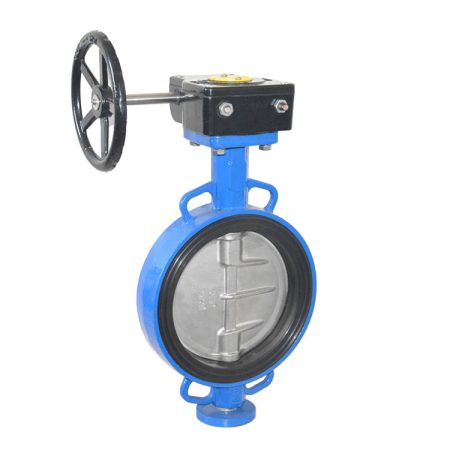
Environmental Impact
The environmental impact of industrial processes, especially those involving the use of butterfly valve sealing systems, is a growing concern for both industry professionals and regulatory bodies. The proper installation and maintenance of seals, such as EPDM seals, play a crucial role in minimizing this impact by ensuring optimal performance, reducing leaks, and preventing the release of harmful substances into the environment. When sealing systems are not properly maintained or installed, the potential for leaks and emissions increases, leading to the contamination of air, soil, and water resources, which can have detrimental effects on ecosystems, wildlife, and human health. Moreover, inefficient sealing systems can result in higher energy consumption and increased greenhouse gas emissions, contributing to climate change and exacerbating global environmental challenges.
To mitigate these environmental impacts, it is essential for industry professionals to adopt sustainable practices in the installation, maintenance, and disposal of EPDM seals and other sealing components. This includes following best practices for installation and maintenance, as discussed earlier, as well as selecting environmentally friendly seal materials and considering the entire lifecycle of the product. Furthermore, investing in research and development for innovative sealing solutions that minimize environmental impacts, such as biodegradable or recyclable materials, can contribute to a more sustainable future for the industry.
In addition to these measures, companies should also strive to raise awareness among employees and stakeholders about the importance of environmental responsibility and provide training on how to implement eco-friendly practices within their operations. By prioritizing sustainability and adopting environmentally conscious practices, industry professionals can help reduce the environmental impact of butterfly valve sealing systems, protect valuable natural resources, and contribute to a greener, cleaner future for all.
Explanation of potential environmental concerns related to EPDM seals in industrial applications
EPDM seals are widely used in industrial applications due to their excellent resistance to various chemicals, weathering, and temperature extremes. However, potential environmental concerns related to these seals need to be addressed and managed responsibly. One primary concern is the possibility of leaks or emissions resulting from improper installation, maintenance, or failure of the seal, which can lead to contamination of air, water, and soil resources. These leaks may release harmful substances into the environment, posing risks to ecosystems, wildlife, and human health. Additionally, the manufacturing process of EPDM seals may generate waste and consume resources, contributing to environmental pollution and depletion. Furthermore, the disposal of used or damaged EPDM seals can also impact the environment if not carried out responsibly, as these materials may take a long time to degrade in landfills, leading to long-term pollution issues. To mitigate these environmental concerns, it is essential for industry professionals to adopt sustainable practices in the installation, maintenance, and disposal of EPDM seals, as well as invest in research and development for innovative, eco-friendly sealing solutions.
Strategies for mitigating environmental impact, such as proper disposal and recycling
Mitigating the environmental impact of industrial processes, including the use and disposal of EPDM seals, requires the adoption of responsible strategies and sustainable practices. One crucial strategy involves the proper disposal and recycling of used or damaged seals to minimize waste generation and reduce pollution. Companies should develop and implement waste management policies that emphasize recycling and responsible disposal methods in compliance with local regulations and industry best practices. Additionally, raising awareness among employees about the importance of following these procedures and providing training on proper disposal techniques can ensure adherence to eco-friendly practices.
Another important strategy is investing in research and development to identify innovative sealing solutions that are more environmentally friendly, such as biodegradable or recyclable materials. These new materials can help reduce the environmental footprint of the sealing systems throughout their lifecycle. Furthermore, companies should continuously evaluate and optimize their manufacturing processes to minimize resource consumption, waste generation, and emissions, thereby lowering their overall environmental impact. By implementing these strategies and promoting a culture of sustainability within the organization, industry professionals can effectively mitigate the environmental impact associated with EPDM seals and contribute to a cleaner, greener future for all.
Conclusion
Butterfly valve EPDM seals are a popular choice in industrial applications due to their excellent properties, such as chemical and temperature resistance, weathering durability, and overall versatility. However, as with any sealing solution, certain challenges may be encountered when using these seals in various industrial processes. By understanding these challenges and adopting best practices, industry professionals can optimize the performance, reliability, and longevity of their sealing systems while minimizing environmental impact.
One common challenge faced when using EPDM seals in butterfly valves is the proper installation and maintenance. As discussed earlier in this blog post, improper alignment, incorrect sizing, and overtightening can lead to a range of issues, including leaks, inadequate sealing, and premature wear or failure. To overcome these installation challenges, it is essential to follow manufacturer guidelines, ensure accurate alignment, and avoid overtightening during the installation process. Additionally, implementing a comprehensive maintenance program that includes regular inspections, leak detection tests, and timely replacement or repair of worn or damaged seals can help maintain optimal sealing performance and extend the service life of the system.
Another challenge encountered in industrial applications is the environmental impact associated with the use and disposal of EPDM seals. As we’ve explored, leaks or emissions resulting from improper installation, maintenance, or seal failures can lead to contamination of air, water, and soil resources, posing risks to ecosystems, wildlife, and human health. Moreover, manufacturing and disposal processes can contribute to pollution and resource depletion. To mitigate these environmental concerns, companies should adopt sustainable practices in the installation, maintenance, and disposal of EPDM seals, invest in research and development for eco-friendly sealing solutions, and continuously evaluate and optimize their manufacturing processes to minimize waste generation and emissions.
Lastly, staying up-to-date with industry standards, regulations, and technological advancements is crucial to address any challenges that may arise in the future. By participating in industry conferences, networking with other professionals, and engaging in continuous learning, companies can stay ahead of emerging trends, identify potential new challenges, and develop innovative solutions to overcome them.
In conclusion, overcoming the challenges associated with using butterfly valve EPDM seals in industrial applications requires a combination of proper installation and maintenance practices, sustainability-focused strategies, and continuous learning and innovation. By addressing these challenges head-on and prioritizing efficiency, safety, and environmental responsibility, industry professionals can optimize the performance and durability of their sealing systems, ensuring the smooth operation of various industrial processes and contributing to a cleaner, greener future for all.
Recap of the challenges of using EPDM seals in butterfly valves for industrial applications
In recap, using EPDM seals in butterfly valves for industrial applications presents certain challenges that need to be addressed to ensure optimal performance, reliability, and longevity. These challenges include proper installation and maintenance, such as avoiding misalignment, incorrect sizing, and overtightening during installation, as well as implementing regular inspections and leak detection tests. Additionally, environmental concerns related to the use and disposal of EPDM seals, like the potential for leaks or emissions, resource consumption, waste generation, and pollution, must be considered and mitigated through sustainable practices. By understanding these challenges and adopting best practices, industry professionals can optimize the performance of their sealing systems, minimize environmental impacts, and contribute to the smooth operation of various industrial processes.
Emphasis on the importance of understanding these challenges and implementing best practices to ensure optimal performance and longevity of the seals
Understanding the challenges associated with using EPDM seals in butterfly valves for industrial applications and implementing best practices are crucial to ensuring optimal performance, reliability, and longevity of the seals. By addressing issues related to installation, maintenance, and environmental impact proactively, industry professionals can prevent leaks, premature wear, and seal failures that may disrupt operations or cause harm to the environment. A comprehensive approach that includes following manufacturer guidelines, regular inspections, leak detection tests, and adopting sustainable practices will not only enhance the sealing system’s performance but also extend its service life. Emphasizing the importance of understanding these challenges and consistently applying best practices demonstrates a commitment to operational efficiency, safety, and environmental responsibility, ultimately contributing to the success and sustainability of various industrial processes.
Encouragement to continue researching and staying up-to-date on advancements in sealing technology
Staying informed and up-to-date on advancements in sealing technology is essential for industry professionals to continuously improve the performance, reliability, and sustainability of their sealing systems. As new materials, designs, and techniques are developed, they often offer innovative solutions to address the challenges associated with using EPDM seals in butterfly valves for industrial applications. By actively participating in industry conferences, engaging with professional networks, and dedicating time to continuous learning, professionals can stay ahead of emerging trends and incorporate cutting-edge technologies into their operations. This proactive approach to staying informed not only enhances the efficiency and effectiveness of sealing systems but also demonstrates a commitment to excellence and environmental sustainability. So, let us encourage one another to continue researching, learning, and embracing advancements in sealing technology to ensure the ongoing success and sustainability of our industries.



